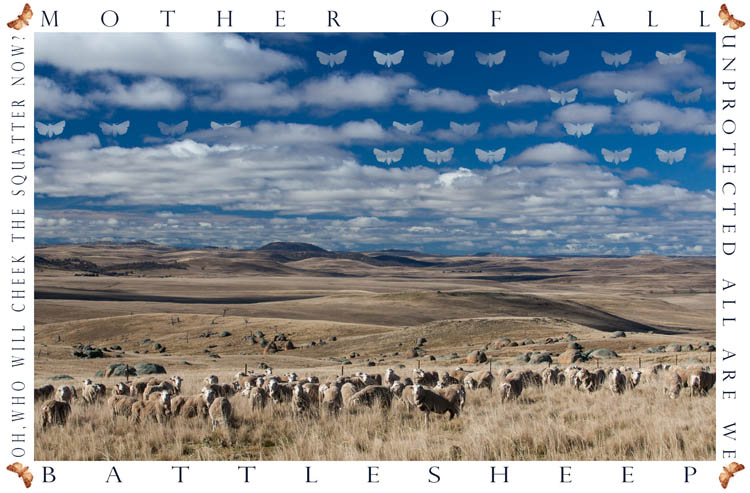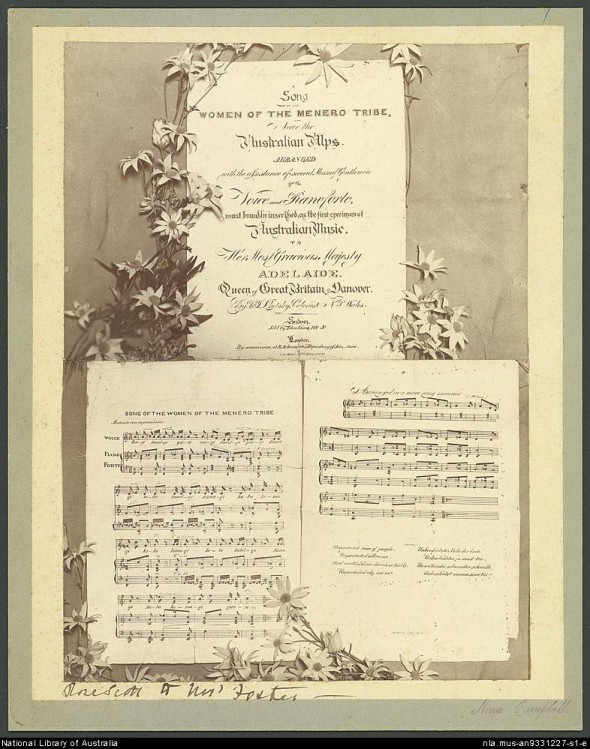In this rural landscape (photographed just to the east of Dalgety, near the Black Range Road junction) I wanted to give equal space to two quite different relationships to the Monaro landscape: that of the pastoralist European settlers and that of the former occupier-custodians of the land – the Ngarigo people.
Neither people appear directly in the image, but are represented respectively by the sheep on the land and the Bogong Moth-clouds in the sky. Each is given equal space in the scene, with the horizon line separating their domains. There are roughly equal numbers of each species.
The text on the left side of the image is from a poem (Andy’s gone with cattle) by Henry Lawson, lamenting the departure of a much-loved family member gone off droving. It goes in part like this:
Who now shall wear the cheerful face
In times when things are blackest
And who shall whistle round the place
When Fortune frowns her blackest
Oh, who shall cheek the squatter now
When he comes round us snarling
His tongue is growing hotter now
Since Andy crossed the Darling
Also a lament, but of a quite different kind, is the text on the right hand-side. It is taken from The Song of the Women of the Menero Tribe, which was ‘collected’ and translated by Dr John Lhotsky during his travels in the Monaro in 1834. It was claimed to be “the first specimen of Australian Music” * Lhotsky recorded the original words (presumably from Ngarigo language?) as:
Kon-gi, kawel-go, yue-ri, congi, kawel-go, yue-ri Kuma gi ko-ko, kawel-go, kuma-gi ka-ba ko-magi ko-ko, koma-gi, ko-ko kabel-go, Koma gi ka-ba, ko-ma-gi yue-ri
which he translated as:
Unprotected race of people,
Unprotected all are we,
And our children shrink so fastly,
Unprotected all are we**
‘Battlesheep’ is s reference to sheep as an instrument of the contest for control of the land (and a minor play on the word: ‘battleship’…). ‘Mother of All’ references the nurturing function of the land, while also alluding to the frequently cited expression: ‘Mother of all battles’ – a discordant ambiguity.
* Whitley, G. P., ‘Lhotsky, John (1795–1866)’, Australian Dictionary of Biography, National Centre of Biography, Australian National University, http://adb.anu.edu.au/biography/lhotsky-john-2357/text3085, accessed 18 September 2012.
**Sydney Gazette, 2 December 1834. Reprinted in: Young, Michael, Ellen Mundy, and Debbie Mundy. The Aboriginal People of the Monaro: A Documentary History. Sydney: NSW National Parks and Wildlife Service, 2000. p. 82


